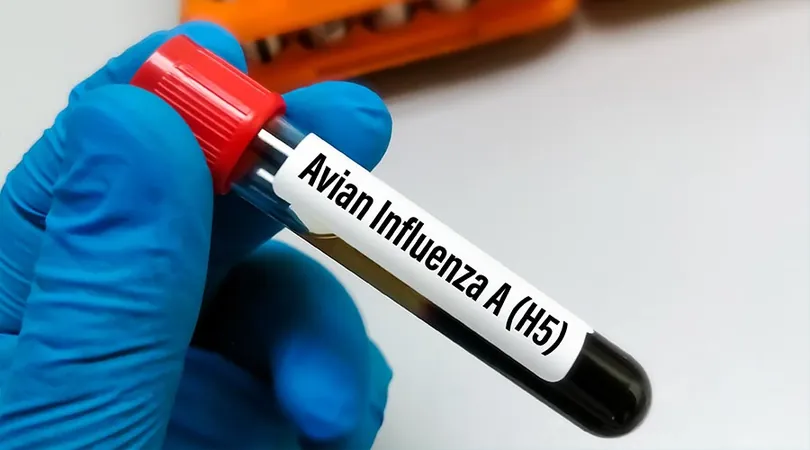
First Fatality from H5 Bird Flu Reported in the U.S. - What You Need to Know
2025-01-13
Author: Charlotte
Introduction
In a tragic development, the Centers for Disease Control and Prevention (CDC) has confirmed that a patient hospitalized in Louisiana with severe avian influenza A(H5N1), commonly known as H5N1 bird flu, has passed away. This unfortunate event marks the first reported death from H5N1 bird flu in the United States, raising alarms and concerns among health officials and the public alike.
Current Statistics
As of January 6, 2025, a total of 66 confirmed human cases of H5N1 bird flu have been logged in the United States since 2024, and 67 cases since 2022. Globally, the World Health Organization (WHO) has reported more than 950 cases of H5N1 bird flu, with approximately half resulting in death. This data emphasizes the serious nature of this virus, even though the CDC reassures that in the U.S., the risk to the general public remains low.
Investigation by the CDC
The CDC has investigated the circumstances surrounding the Louisiana case. They emphasize that no instances of person-to-person transmission have been identified, and most H5N1 infections in humans are linked to direct contact with infected birds or animals. Importantly, there have been no virologic changes noted in wild birds, poultry, or livestock that could elevate the risk of transmission or severity in humans.
At-Risk Populations
Individuals who work closely with birds or other wildlife, such as poultry farm workers and veterinarians, are at a higher risk of exposure. To mitigate this risk, the CDC has developed comprehensive guidelines and resources to educate these populations on preventive measures against H5N1 infection.
CDC's Public Health Measures
In response to this alarming incident, the CDC is actively involved in several measures to safeguard public health: 1. Collaborating with state and local health departments to investigate and understand the epidemiological impact of each H5 case. 2. Conducting ongoing surveillance for H5N1 cases across different regions. 3. Monitoring any genetic or virological changes that might suggest that H5 viruses are adapting to mammals, which could increase the risk of wider transmission among humans. 4. Keeping tabs on any mutations that could render current flu antiviral medications and vaccine candidates less effective.
Conclusion
As health officials continue their vigilance, it is crucial for everyone to stay informed about H5 bird flu and take appropriate precautions, especially those in high-risk categories. For more details on H5 bird flu, including prevention tips and updates, visit the CDC's official website. Stay safe, informed, and vigilant against this serious viral threat!









 Brasil (PT)
Brasil (PT)
 Canada (EN)
Canada (EN)
 Chile (ES)
Chile (ES)
 Česko (CS)
Česko (CS)
 대한민국 (KO)
대한민국 (KO)
 España (ES)
España (ES)
 France (FR)
France (FR)
 Hong Kong (EN)
Hong Kong (EN)
 Italia (IT)
Italia (IT)
 日本 (JA)
日本 (JA)
 Magyarország (HU)
Magyarország (HU)
 Norge (NO)
Norge (NO)
 Polska (PL)
Polska (PL)
 Schweiz (DE)
Schweiz (DE)
 Singapore (EN)
Singapore (EN)
 Sverige (SV)
Sverige (SV)
 Suomi (FI)
Suomi (FI)
 Türkiye (TR)
Türkiye (TR)
 الإمارات العربية المتحدة (AR)
الإمارات العربية المتحدة (AR)